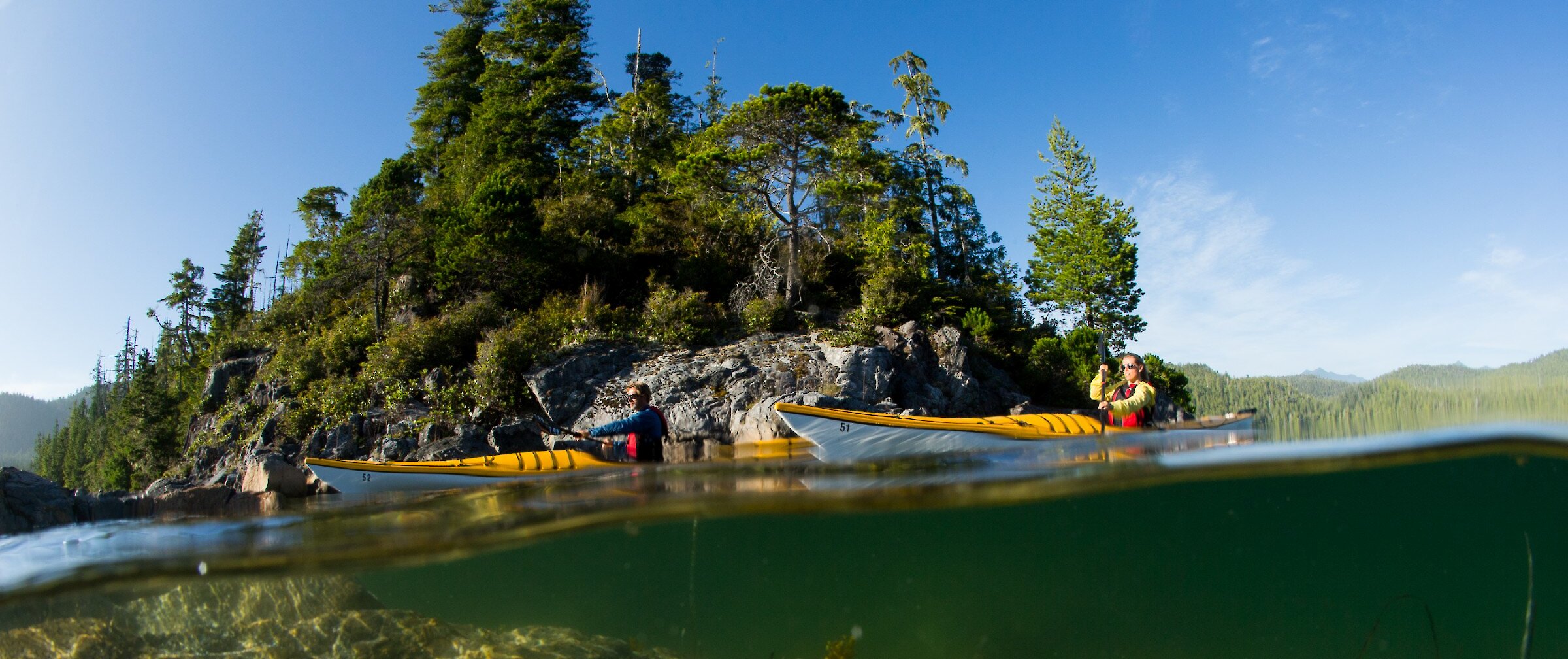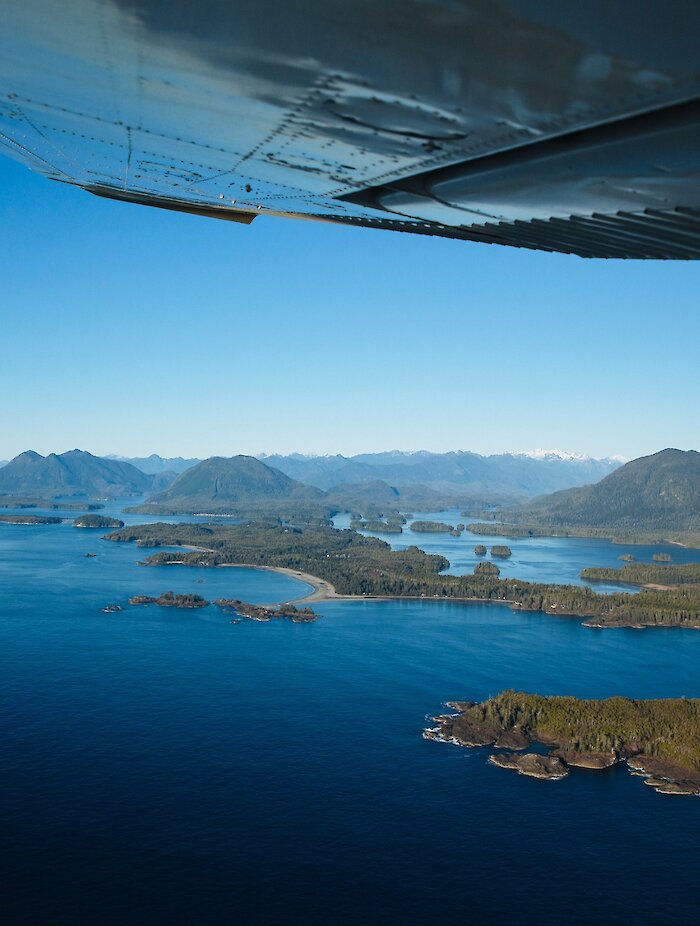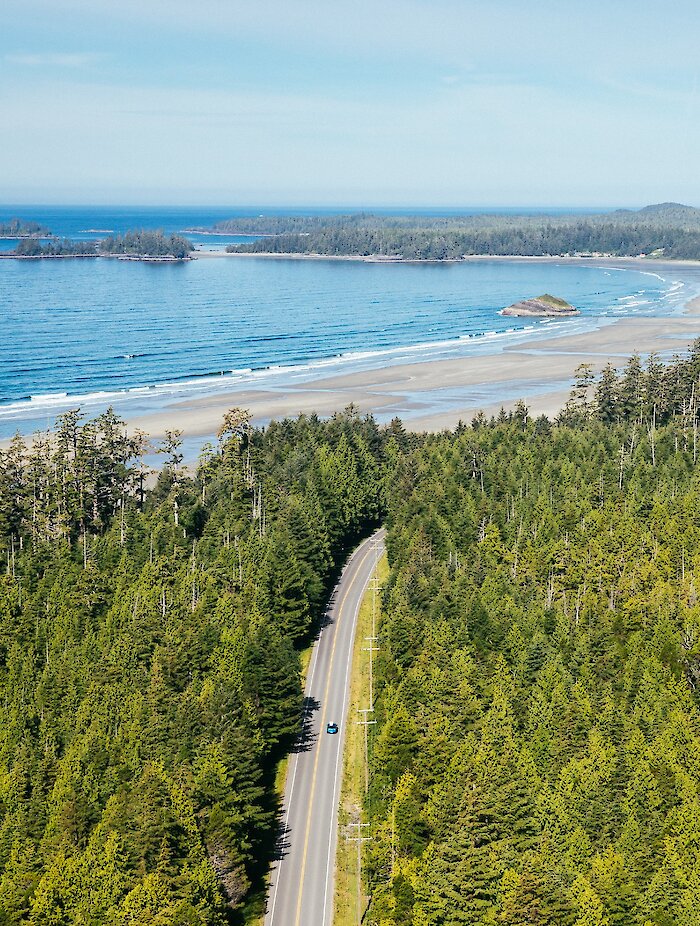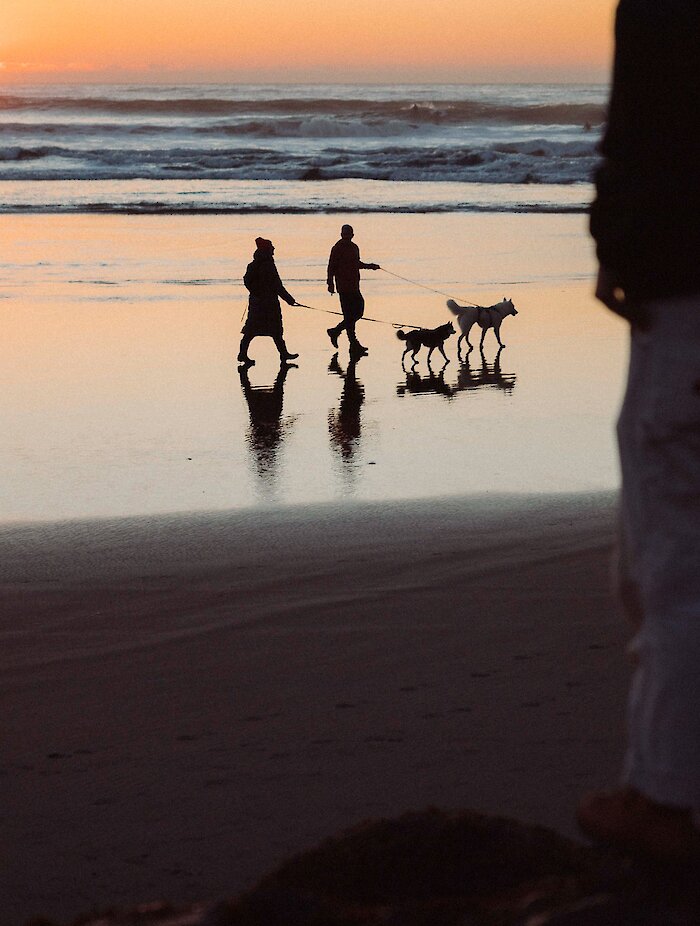Tips & Resources
From wildlife and coastal safety to travel advisories and bulletins and parking, there is a lot to know when visiting our remote town on the West Coast. The team at the Tofino Visitor Centre is ready to answer your questions and provide you with any maps or brochures for your journey. We have provided key online resources below to help you with your journey.
Commonly asked questions
The three main parking zones include downtown Tofino, Tofino beaches and Pacific Rim National Park Reserve.
Downtown Tofino: May 1 - Oct 31, per vehicle. Payable at the machine by credit card, coin, app or by phone.
Tofino beaches: Year-round, per vehicle. Payable at the machine by credit card, coin, app or by phone.
Pacific Rim National Park Reserve: Year-round, per person/group. Payable at the machine by credit card, at Parks Administration or the Tofino Visitor Centre by credit, debit or cash.
Learn more about parking and getting around Tofino.
There isn’t one! It depends on the winds and tides. The beaches are all uniquely beautiful. Popular surfing beaches include Chesterman Beach, Cox Bay and Long Beach. Beaches typically more sheltered from bigger waves include Tonquin Beach and MacKenzie Beach. Popular tide-pooling beaches include Tonquin Beach, MacKenzie Beach and South Chesterman Beach at low tide. Learn more about the beaches.
Yes. Dogs are welcome on the beach. However, local bylaws require that they must be leashed. Owners are expected to clean up after them. Learn more about dogs in Tofino.
We recommend the Tonquin Trail and the Big Tree Trail in Tofino, the Wild Side Trail on Flores Island for a challenging and remote experience, the Wild Pacific Trail in Ucluelet and all official and maintained trails in Pacific Rim National Park Reserve.
You can catch the sunset from Downtown Tofino and of course, at the beach. Popular sunset beaches are MacKenzie Beach, Chesterman Beach, Cox Bay, Long Beach and Wickaninnish Beach. Tonquin Beach requires hiking back through a forested trail after sunset. Learn more about the beaches.
The best way to see whales and learn about them is by boat or on a whale watching tour, as they aren’t as commonly spotted from shore. Keep your eyes peeled for whales around the Tofino Harbour (anytime) or while walking the Wild Pacific Trail (in March) - you might get lucky! The most common whale species are Grey whales and Humpback whales but we also see the occasional Orca.
Have nature at your doorstep, literally. Wake up outside in one of these Tofino campgrounds. Camping here is an exceptionally popular bucket list item, so book early to save your spot.
Reservations at an authorized campground are required on the West Coast of Vancouver Island. There are no serviced camping sites on backroads or highway pullouts, and there is zero tolerance for unauthorized camping and unauthorized overnight parking within all communities.
Wildlife is all around us in Tofino. It is important to be prepared and know before you go. Visit our responsible recreation section for tips or WildsafeBC for in-depth information.
There's a lot to be aware of in Tofino. Learn how to recreate responsibly and safely.
Additional tips & resources
Call 9-1-1 for police, fire, ambulance, Search and Rescue, and Coast Guard services.
Pacific Rim National Park Reserve has 5 public-access automated external defibrillators (AED) in the Long Beach Unit.
These AEDs are housed in heated, weatherproof cabinets, and are located in strategic locations ensuring swift action during an emergency.
- Kʷisitis Visitor Centre at Wickaninnish Beach
- Wickaninnish Beach Washroom (#C beach access)
- Green Point Campground Check-In Kiosk (when campground is open)
- Long Beach South Washroom (#2 beach access)
- Incinerator Rock Washroom
An AED is also available at the South Chesterman Beach changeroom facility.
Tofino General Hospital
261 Neill Street (at First Street)
250.725.3212
Tonquin Medical Clinic (open Monday-Friday)
220 First Street
250.725.3282
Royal Canadian Mounted Police (RCMP)
400 Campbell Street (at 3rd Street)
250.725.3242
Westcoast Community Resources Society
Tofino location
St. Columbia Church Building
110 Second Street
Ucluelet location
500 Matterson Drive
Ucluelet main reception open Monday to Friday 10am to 3pm: 250-726-2343 and email
Transition House available for those fleeing violence or abuse please call the 24-hour Support and Information at: 250-726-2020 or Toll Free at 1 877-726-2080
Westcoast Community Resources Society
Contact the Sexual Assault Response Coordinator at 250-726-5480 for sexual assault services.
Volunteer Sexual Assault Response Team support through forensic exam at the local hospital is available. Third-party reporting is also available.
See website for full offerings: Sexual Assault Service (SAS) - Westcoast Community Resources Society
Living on the exposed outer edge of the West Coast means that - while unlikely during your visit - there is a possibility of a tsunami, so it is good to be prepared in case of an earthquake. Tsunamis are a series of waves, most frequently generated by a major earthquake beneath the ocean floor.
To know what to do during an earthquake and in the aftermath, see the PreparedBC earthquake preparedness and tsunami preparedness information. For detailed Tofino-specific information, please visit the District of Tofino.
The recommended evacuation elevation during a tsunami is 20 meters above sea level. You can familiarize yourself with this map of the Emergency Reception Centre at the Tofino Community Centre, 351 Arnet Rd, and the other areas at higher elevations.
Wondering what to expect during an evacuation? Here are some more details.
If you want to be extra vigilant, you can sign up for the emergency warning system - Voyent Alert! - to get text or call notifications in case of tsunamis, earthquakes, or wildfires.
There are many ways to travel to Tofino. Be sure to check the roads and conditions reports, and request winter tires or chains from the car rental company if you are driving anytime between October and April. Learn more.
Resources:
With so many beaches to choose from and loads of adventures to be had, we want to make getting around Tofino easy. Here are all the ways to travel within Tofino:
Buses:
- Free summer shuttle schedule
- West Coast Transit bus schedule
- Tofino Express Bus
- Vancouver Island Connector
- Large group? Book the Tiki Cab
Parking:
- Pacific Rim National Park Reserve passes
- Municipal in-town and beach parking
- Municipal RV parking in town
Biking:
For more information on how to get around by bike, see the Biking page.
One of the biggest draws to Tofino is the beaches and parks. Pacific Rim National Park Reserve has the largest stretches of sandy beaches, but there are also sections of dramatic rocky shoreline at places like Tonquin Beach and Trail. You can also go for excursions on the surrounding islands for day hikes or overnight camping trips.
In addition to the National Park Reserve and Tla-o-qui-aht Tribal Parks, there are several Provincial Parks in and around Clayoquot Sound. Click here for a map of all the BC Parks in the area and additional information.
Camping is a quintessential Tofino experience. Listening to the sound of the waves right outside your tent flap or staring up at the stars around your campfire are beautiful ways to experience Tofino.
Resources:
- Campgrounds in Tofino area
- Sani Dump - The Sani station in Tofino is located at the Co-op gas station and a usage fee applies. Green Point campground in Pacific Rim National Park Reserve has one, reserved for on-site campers.
Interested in self-guided tours of public art installations or places of significance? You can listen to recordings and follow along a self-guided "Downtown Art Walk," a "Multi-Use Path (MUP) Art Walk," or a "Downtown Cultural Walk."




